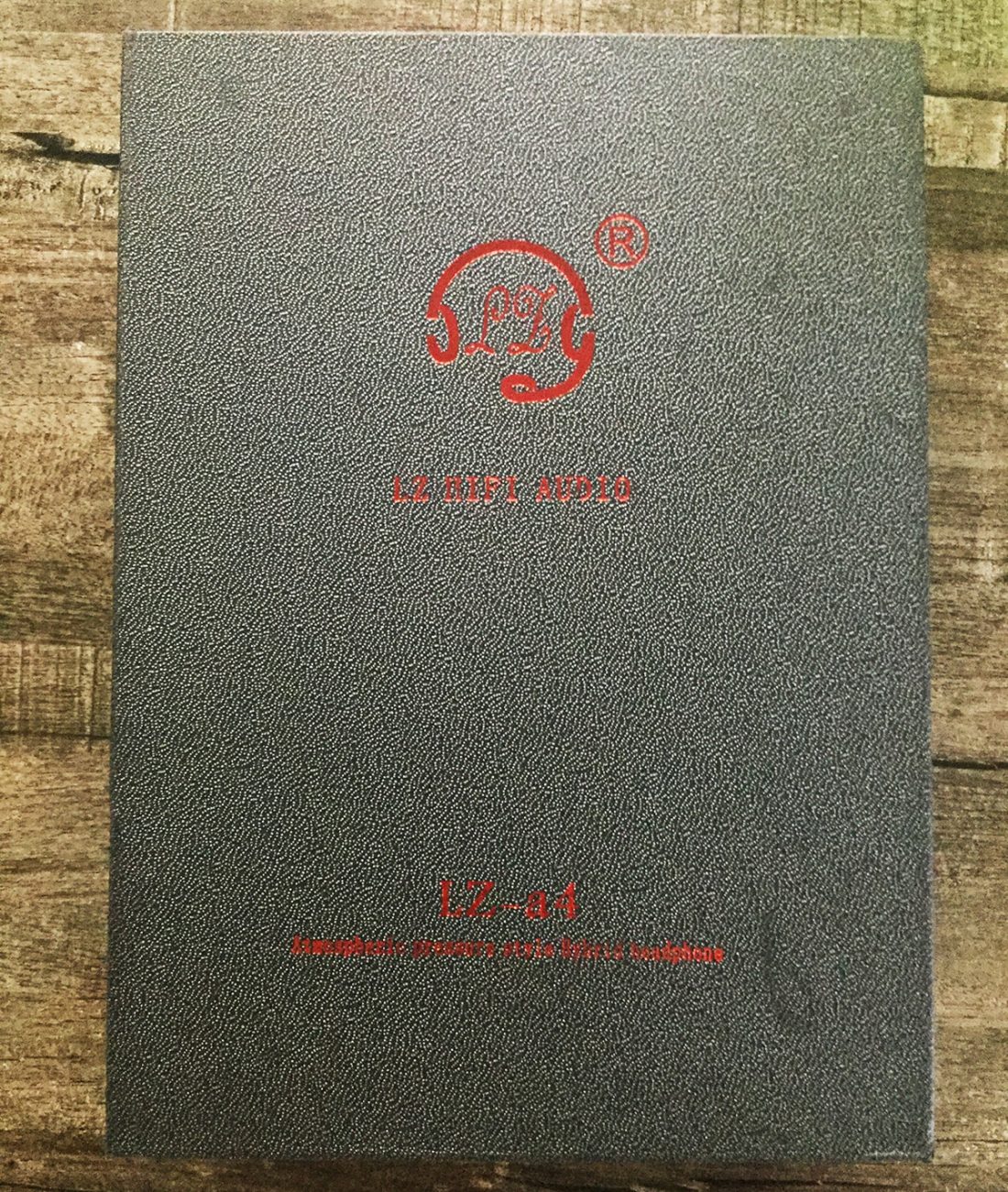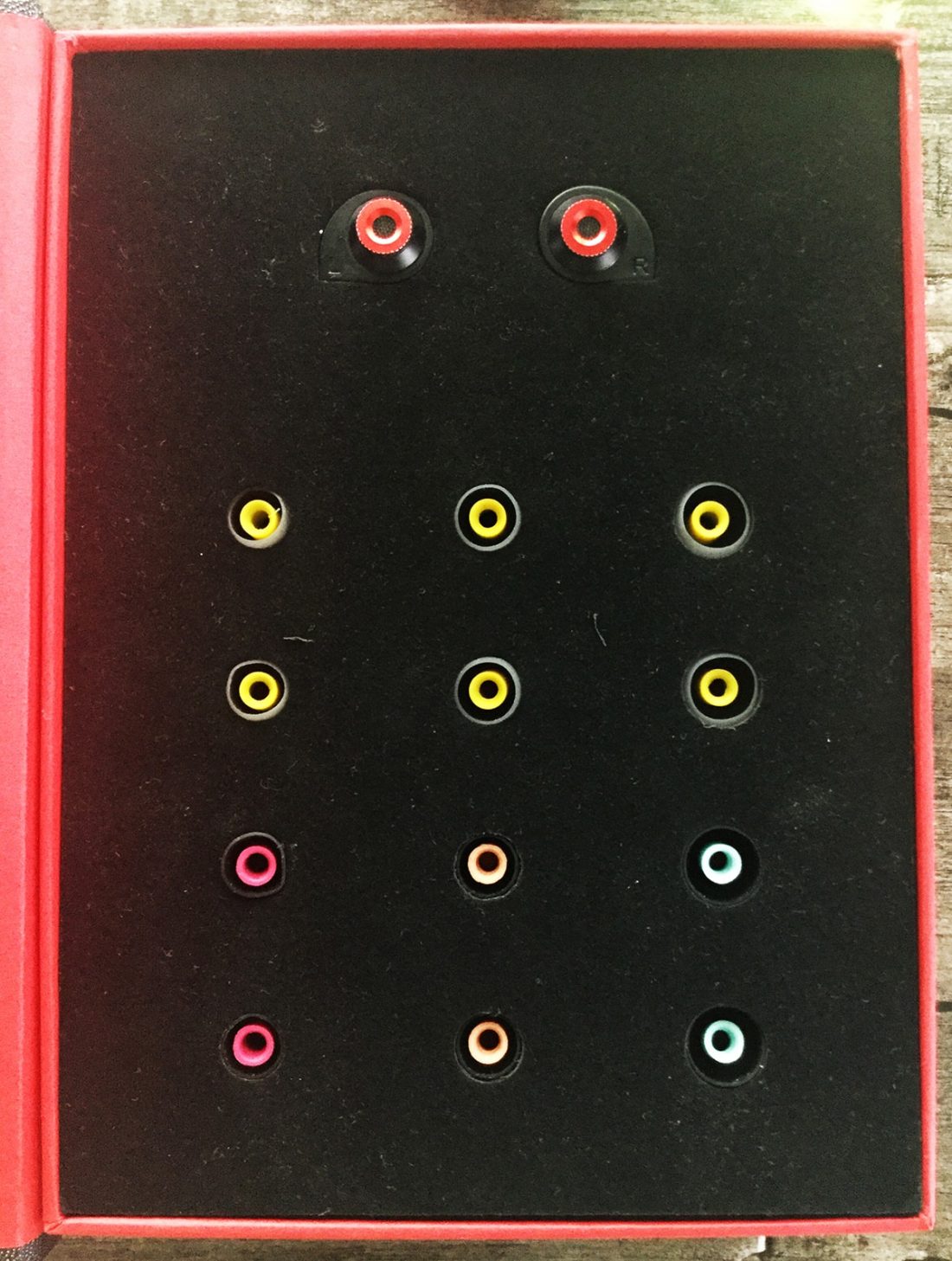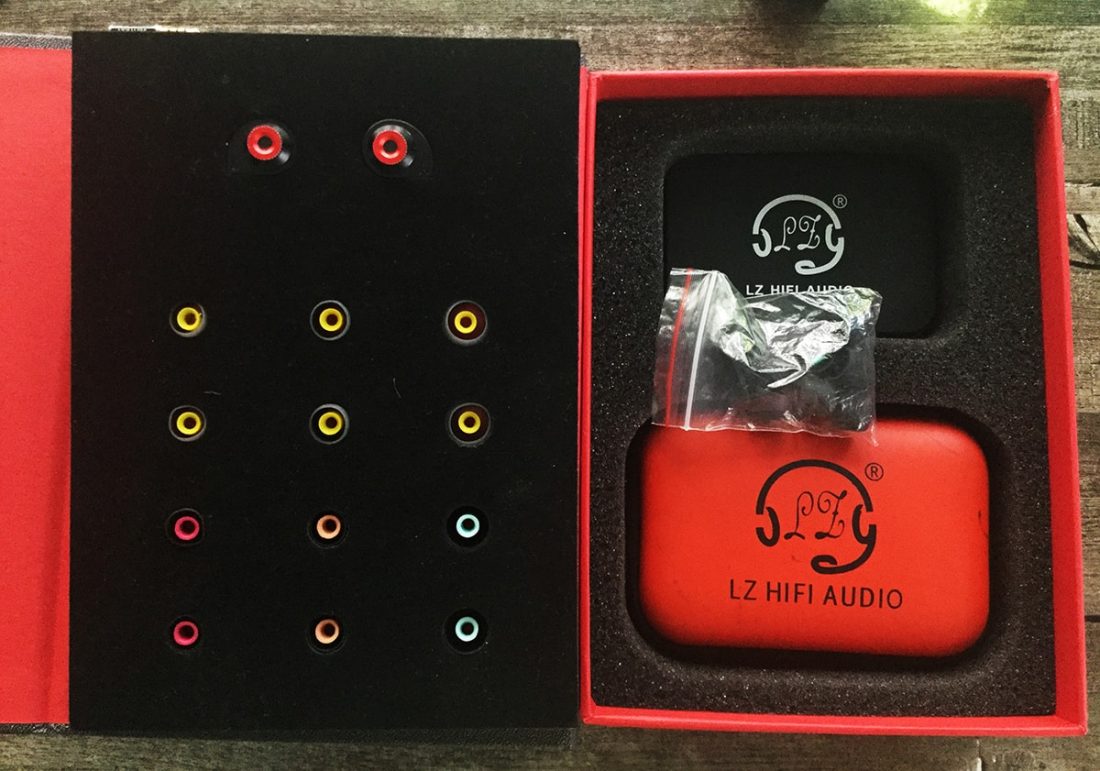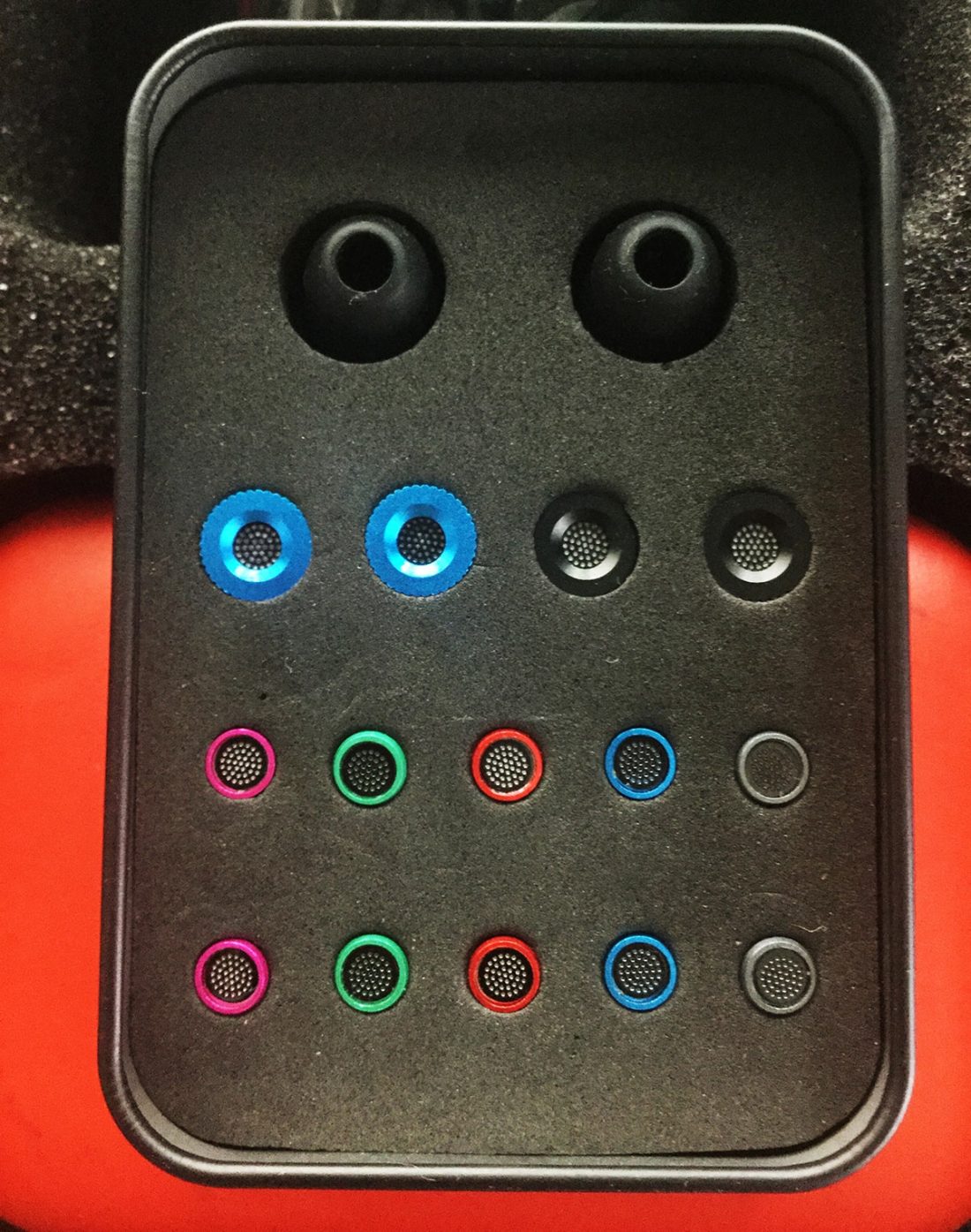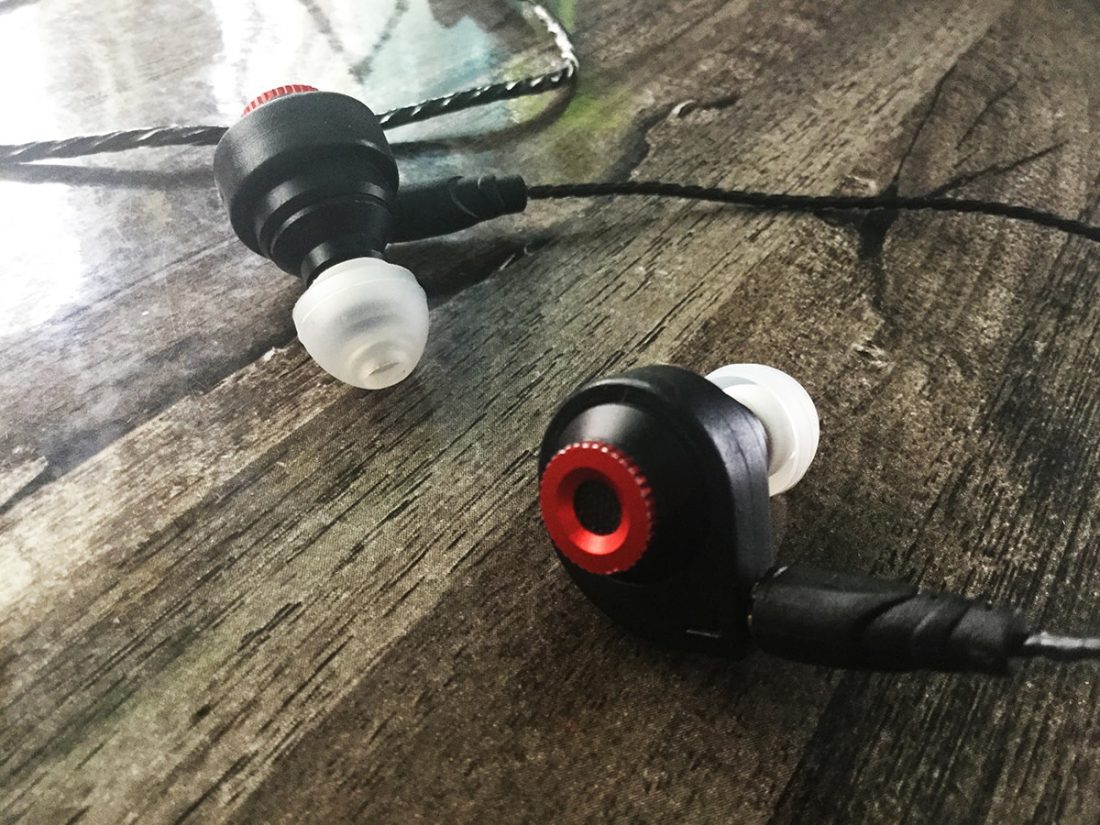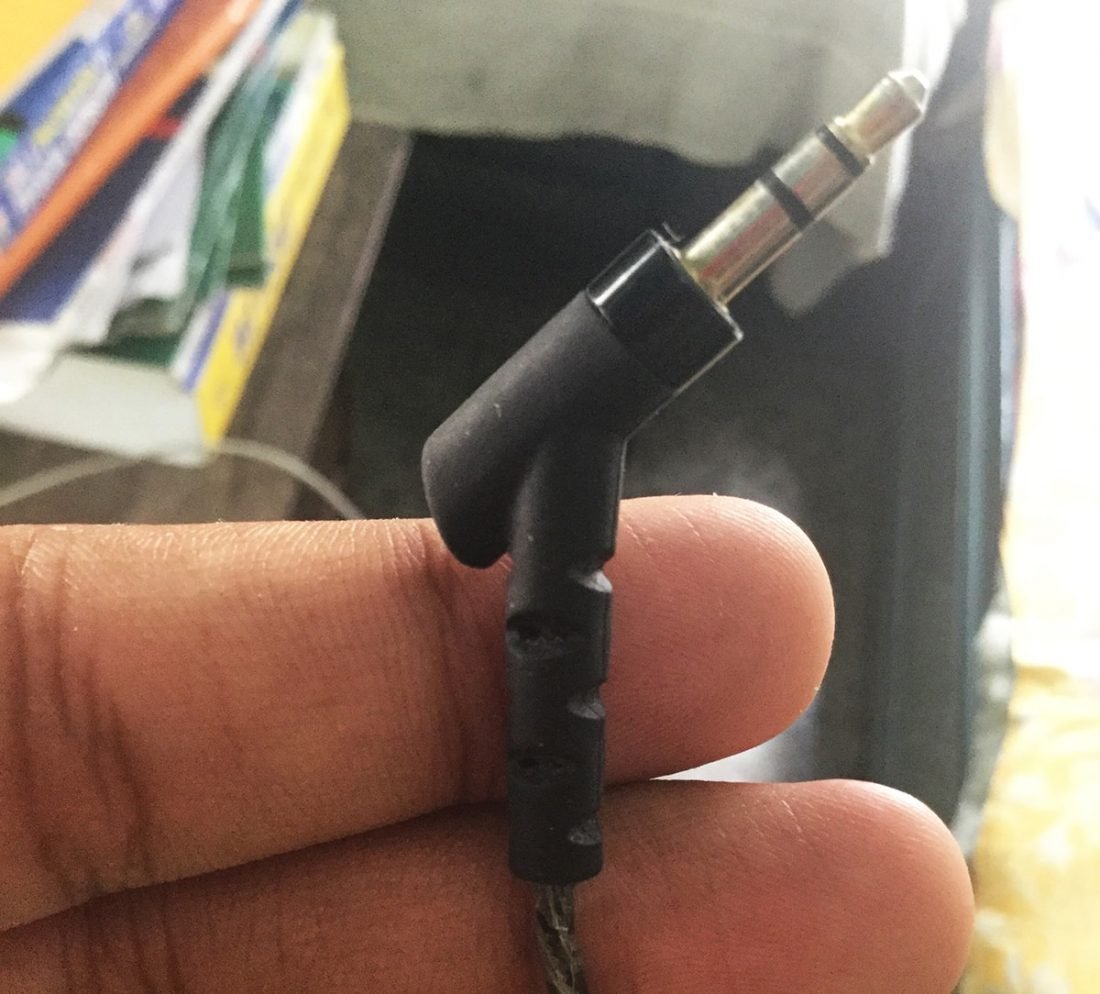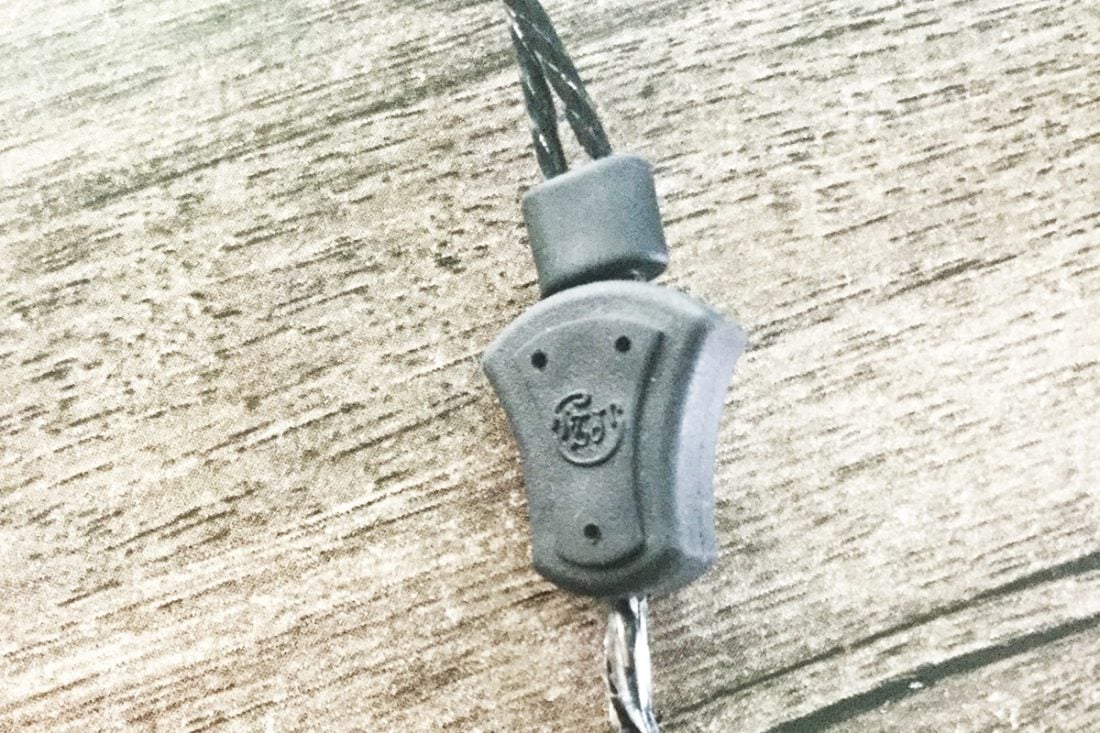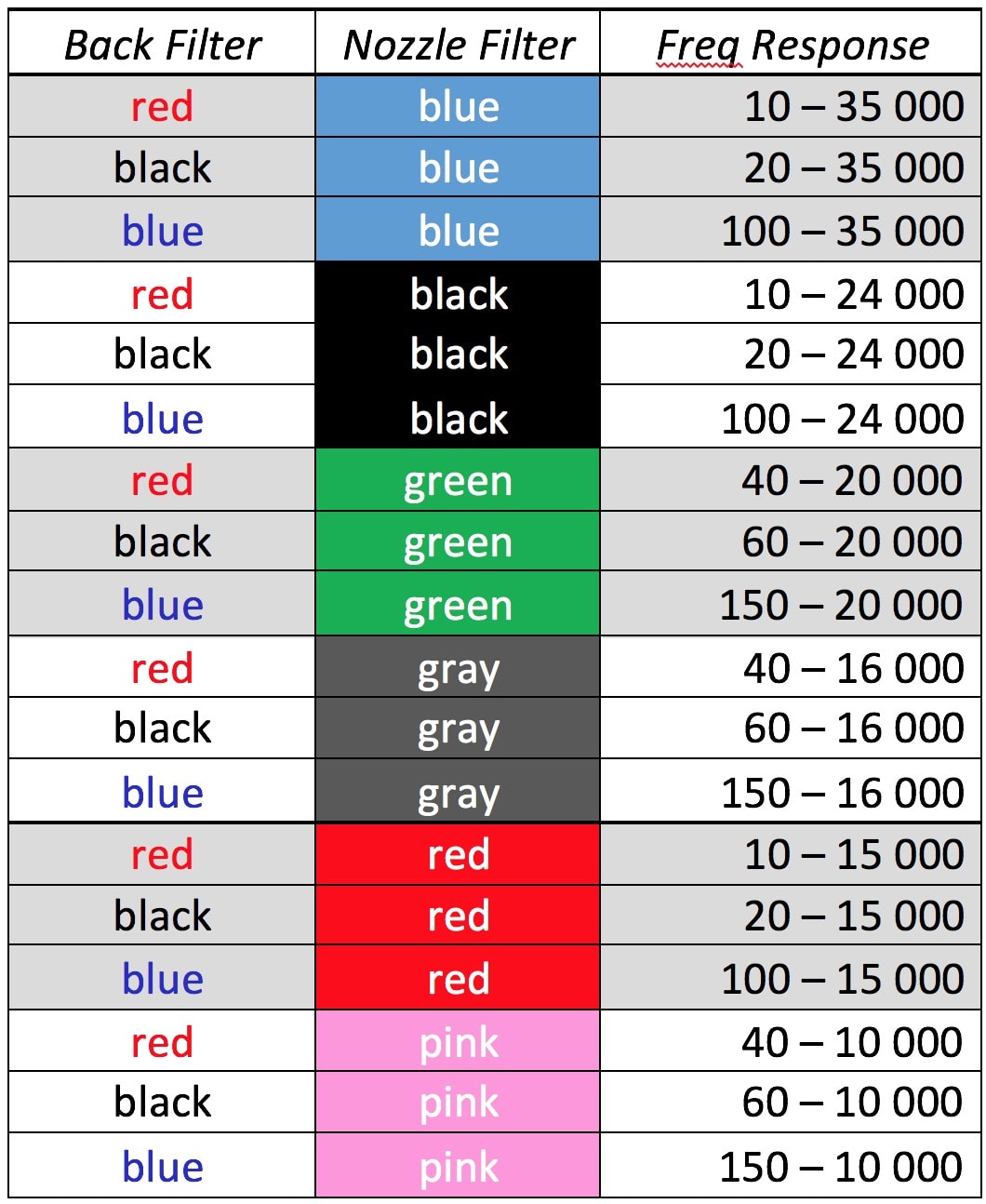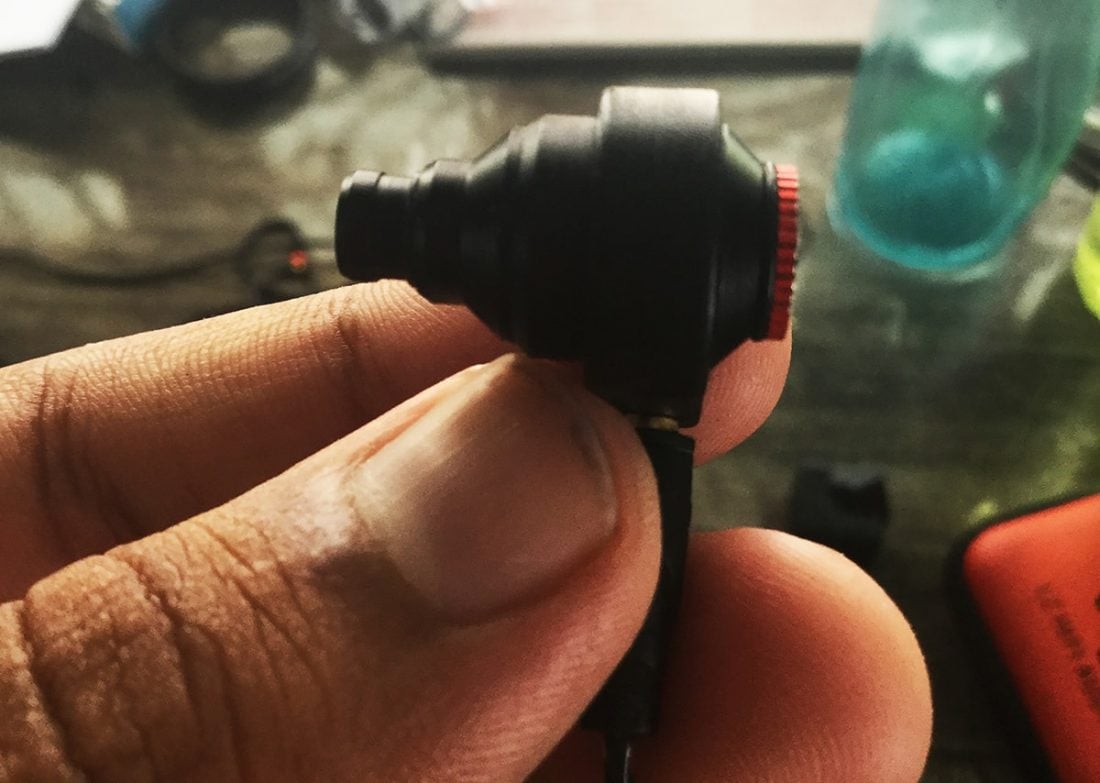LZ Hi-Fi Audio is a small, rather obscure company that handcrafts affordable in-ear monitors (IEMs) for the public. There’s not much information available about them online, but if you want to learn more, Paul Brooks (Brooko) has written a great intro about the company and its founder, Lao Zhong (LZ). I’ve had the LZ-A4 earphones for about four months and have burned them with my mixed tracks of pink and white noise for about 72 hours. I’ve used them every day (at least five days a week) during these four months to listen to all genres of songs (rock, EDM, pop, movie soundtracks, Western classics, etc.). Don’t want to read the full review? Here’s the takeaway: The filter implementation is exceptional (much better than that of RHA). So, if you want IEMs under $200, these should be high up on your list. Now, on to the main review.
Unboxing the LZ-A4
The unboxing experience was quite nice; LZ knows how to pack its IEMs properly. The LZ-A4 came in a black, reinforced cardboard box.
Upon opening the box, you’ll be greeted by the IEMs themselves and a plethora of colorful eartips.
After removing the top foam cover, you’ll see two boxes: one black metal box and another orange-colored hard carrying case for the IEMs. There’s also a small plastic pouch containing a few more silicon tips, a single pair of foam tips (which is of very poor quality, with no retention capability), and a shirt clip.
Inside the black metal box, you’ll find all the filters that are included with the LZ-A4 (yes, these have a tunable filter system), along with a pair of large double flange tips.
The orange box contains a 3.5 mm micro-miniature coaxial (MMCX) cable, which I’ll talk about later in the review. So, in the box, you’ll get:
The IEMs 6 pairs of double-density single flange tips (S/M/L) 3 pairs of single-density single flange tips (S/M/L) 1 pair of foam tips (M) 1 pair of double flange tips (L) A hard-shell carrying case Black metal box for the filters 3 back filters and 6 front filters (1 back and 1 front filter pre-attached) 1 detachable 3.5 mm nylon-sheathed 4-core OFC cable 1 shirt clip
Build Quality
The build quality of these IEMs is very good, if not exceptional. The nozzle and the back of the IEMs are made of an alloy, and the housing that contains the MMCX connector is made of ABS plastic. It looks and feels durable, but not premium. The MMCX connectors are gold-plated, which is a nice touch. I am disappointed with the quality of the cable. The left MMCX connector on the cable became loose after a few detachments, and the nylon sheathing on the cable started peeling off. These are minor issues, but noticeable nonetheless. However, since the sound quality isn’t affected, I’m okay with it. The 3.5 mm jack on the cable is gold-plated and angled at 45 degrees. I think this is a great thing, as most of the time, with straight jacks, they get stuck inside pant pockets and only give way after a lot of force. So, LZ has done a good job with this. The Y-split on the cable is made of plastic and has a cable shortener.
Ergonomics and Isolation
Now, this is where YMMV. For me, the fit was not that great with the IEMs; the supplied stock eartips always tend to slip out of my ears. Only the smallest eartips in the set would fit me, but still, it was not the isolation that I desired. So, I ordered a pair of SpinFits (11 mm) from AliExpress, and those were the ones that gave me the best fit with these IEMs (about 10 dB of isolation would be my guess). Although this would not be enough to hide the sound of an airplane or the inside a subway system, it’s still great for outdoor isolation. With the SpinFits, the LZ-A4 fit me like a marshmallow. The insertion was neither too deep nor too shallow; it was the perfect fit. However, I noticed that the outer housing has a sharp edge to it, which I filed down a bit so that I wouldn’t hurt my ears when fitting it. The IEMs can be worn over the ear or cable-down—it’s just a matter of preference. I prefer over the ear, as it makes the fit better and also reduces microphonics.
Filters
Now, since filters are a key part of the LZ-A4, I feel that they deserve their own section in this review. The filter system on the LZ-A4 is much more robust than that of, say, the Trinity Atlas or the RHA T20i, but not as robust as the FLC8S. Still, these filters change the sound signature much more noticeably. For example, if you put on the pink nozzle filter, you’ll notice that the treble becomes very smooth and loses a lot of its clarity. If you put on the blue back filter, you’ll notice that the sub-bass rolls off much earlier than expected. If you choose the red … well, you get my point. You can have a look at the frequency graph for the different tuning filters. For this review, I’ll be using the red back filter and the black front filter, as these provide the most balanced sound for these IEMs. Plus, I listen to a lot of rock, EDM, and pop music, so this is the best filter combo for me.
Sound
Now, on to the most subjective part of the review: sound. Just a reminder that I’ll be using the red back filter and the black front filter—also, I won’t be posting any graphs in this review, as I don’t believe in graphs as much as I believe in my ears! This time, I’ll be listening to the IEMs via two modes: I will also list the soundtracks that I’ve used for each section of my sound test.
Bass
The IEMs have a kind of balanced sound signature with a slight sub-bass boost. This means that except for the bass, no other part of the frequency is overemphasized. It’s tight, punchy, and really fast. But it’s in no way boomy or bloated, and unlike the RHA T20i, doesn’t sound harsh at high volumes. There’s more priority in the sub-bass region than in the mid-bass, so EDM and pop songs sound fantastic with these IEMs. If you don’t like too much bass, you could always swap the red filter with the blue one, which reduces the bass significantly—giving you a much smoother presentation. So, I’d give the bass full marks here. Tracks used:
Axel Thesleff – “Reincarnation” Martin Garrix – “Animals” Alessia Cara – “Here” Zara Larsson – So Good (album) Jordan Comolli – “Alone”
Mids
The mids in these IEMs feels a bit intimate (it’s as if you’re part of the band, and the lead vocalist is singing beside you). Male and female vocals are given more or less equal priority, so you won’t feel as though the female vocals are a bit farther off than the male vocals, or vice versa. The vocals don’t get drowned out by the instruments—even in busy tracks—and they sound full-bodied and natural without being too overwhelming. The female vocals have a bit of airiness in them, and Ed Sheeran’s vocals in “Photograph” have a really nice feel to it (it’s a little hard to describe—you need to listen to it yourself!). These IEMs are quite detail-revealing for their price. For example, in Ed Sheeran’s “Photograph,” you can hear Ed breathing, the guitar squeaking when the chords are being changed, etc. It’s just a mesmerizing experience … so, another thumbs-up for the LZ-A4 in this department. Tracks used:
Adele – 25 (album) Charlie Puth – Nine Track Mind (album) Ed Sheeran – X / Divide (album) Amber Rubarth – Sessions from the 17th Ward (album) John Newman – “Love Me Again” Elvis Presley – “Can’t Help Falling In Love With You”
Treble
Again, these IEMs are value for money. The treble on these is bright and energetic, but in no way sibilant. It never sounds harsh—even with high volumes—and cymbal crashes and hi-hats sound very nice (bright and sharp without sounding splashy, and with a nice decay that leaves you wanting more of that action). The upper treble extends quite well on these IEMs with the black nozzle filter, without any roll-off. Violin rendition is also very clear and detailed on this track. Even in busy tracks, the high notes of the guitar in a few busy tracks comes out properly. So, another top score for these IEMs. Tracks used:
Led Zeppelin – IV (album) Ed Sheeran – X / Divide (album) Amber Rubarth – Sessions from the 17th Ward (album) Pink Floyd – Dark Of The Moon (album) John McLaughlin, Al Di Meola, and Paco De Lucía – Friday Night In San Francisco (album) Ludovico Einaudi – Islands: Essential Einaudi (album)
Soundstage, Imaging, and Separation
The tracks that are used for testing the soundstage and separation of these IEMs are binaural tracks. This means that the tracks basically have the music coming from all directions and are generally recorded using a binaural mic. Sessions from the 17th Ward is an excellent binaural album, and I’ll be mainly using that track for this test. Well, the soundstage on these IEMs is very nice. (Not open-back headset nice, but better than most IEMs at this price point.) It’s really very expansive (not expensive, mind you!), but the soundstage is oval-shaped. This means that the left and right side will feel more expansive than the front and the back. Separation is nice on these IEMs. In Beethoven’s “Symphony No. 5”—which is quite a busy track with all the flutes, violins, and trumpets going on in the orchestra—you can definitely pick up all the instruments being played in the track. There’s also no distortion whatsoever in these tracks, so imaging is another bonus. I’m not sure what magic LZ has used on these IEMs, but they really sound splendid! Tracks used:
Amber Rubarth – Sessions from the 17th Ward (album) Yosi Horikawa – Vapor (album) Led Zeppelin – IV (album) John McLaughlin, Al Di Meola, and Paco De Lucía – Friday Night In San Francisco (album) Beethoven – Symphony No.5 (album)
Sensitivity
You won’t have any trouble driving them out of your smartphone. It has a low impedance of 16 Ω and a high sensitivity of 120 dB (very high sensitivity indeed!). So yeah, it’s basically very efficient, and most smartphones can drive it without any issues whatsoever. Tracks used: No particular track used (obviously)
The LZ-A4 vs. the RHA T20i
Now, time for a short comparison between the only other IEMs I had at the time, i.e., the RHA T20i, which is in the same price category. The RHA T20i is a dark-sounding pair of IEMs with an intimate soundstage. I’ll be making the comparison a bit easier to read by indicating the superior IEMs with “<” or “>” or “=” (when they’re equal).
Neutrality: LZ-A4 > RHA T20i Timber/Naturalness: LZ-A4 > RHA T20i Detail/Resolution: LZ-A4 > RHA T20i Imaging & Positioning: LZ-A4 > RHA T20i Soundstage: LZ-A4 » RHA T20i Dynamics: LZ-A4 > RHA T20i Bass Quantity: LZ-A4 < RHA T20i Bass Quality: LZ-A4 > RHA T20i Mids Quantity: LZ-A4 = RHA T20i Mids Quality: LZ-A4 > RHA T20i Treble Quantity: LZ-A4 = RHA T20i Treble Quality: LZ-A4 = RHA T20i Amount of Sibilance: LZ-A4 = RHA T20i Comfort: LZ-A4 » RHA T20i Apparent Build / Durability: T20i » LZ-A4 Immersion/Engagement: LZ-A4 > RHA T20i (The RHA made me tap my foot for Sia’s “Cheap Thrills,” but listening to it with the LZ actually made me dance! Plus, since I got a better fit with the LZ, I had better isolation—which, in turn, led to better immersion.) Overall Sound Quality: LZ-A4 > RHA T20i (That was obvious, wasn’t it?)
Technical Specifications
Brand: LZ Model: A4 Driver: 1 Dynamic driver + 2 Knowles Balanced Armature Drivers (30017 TWFK Driver) Impedance: 16 Ω Headphone sensitivity: 120 dB Frequency range: 10–35000 Hz Interface: 3.5 mm Cable Length: 1.2 m ± 5 cm Weight: 30 g Interface Type: MMCX
Conclusion
I hope it’s obvious by now that for this price point, the sound is more or less perfect on these IEMs. They offer much more value for money than the RHA T20i in most aspects—except, perhaps, for the build quality. But still, for me, that build quality comes with IEMs that can be worn for a maximum of only one hour. However, with the LZ-A4, I could use it for four hours without even feeling that it was there. So, I think that LZ has a real winner here with the LZ-A4, and I now bestow upon it the title of: The best Hybrid IEM out there for under $200!
